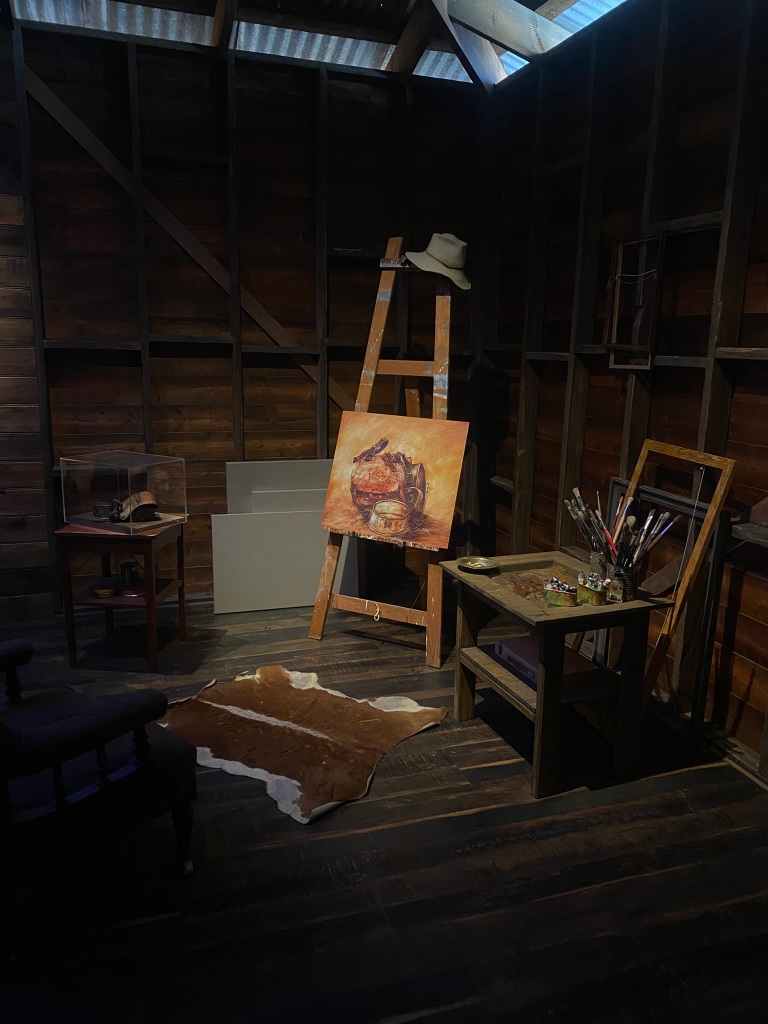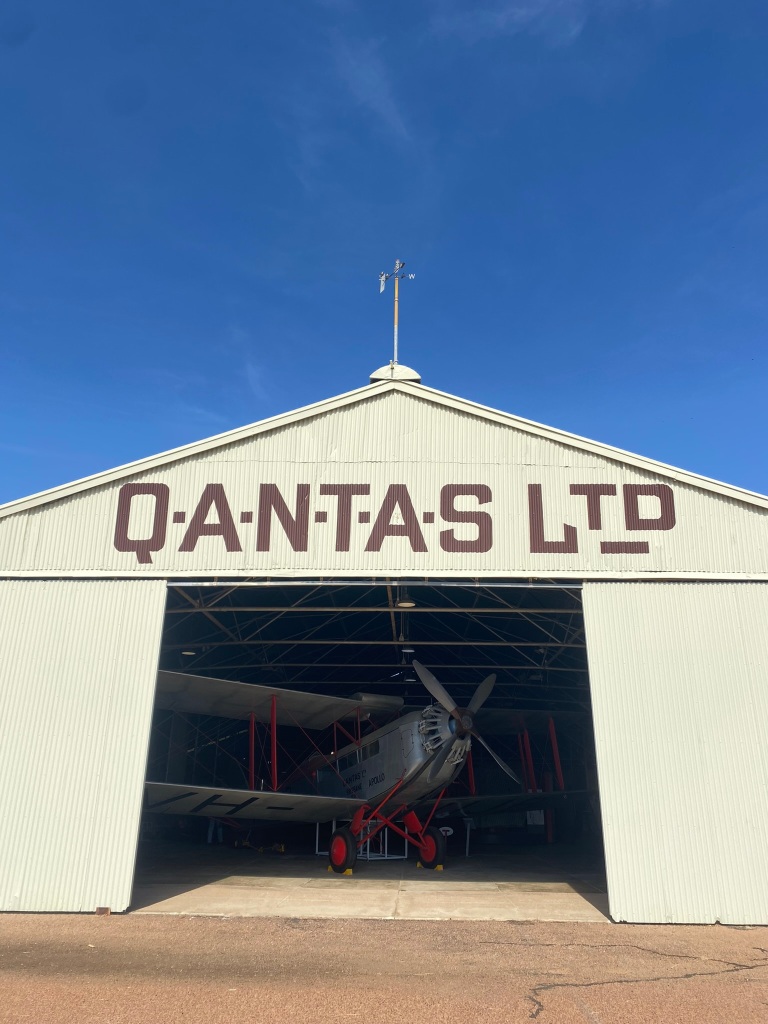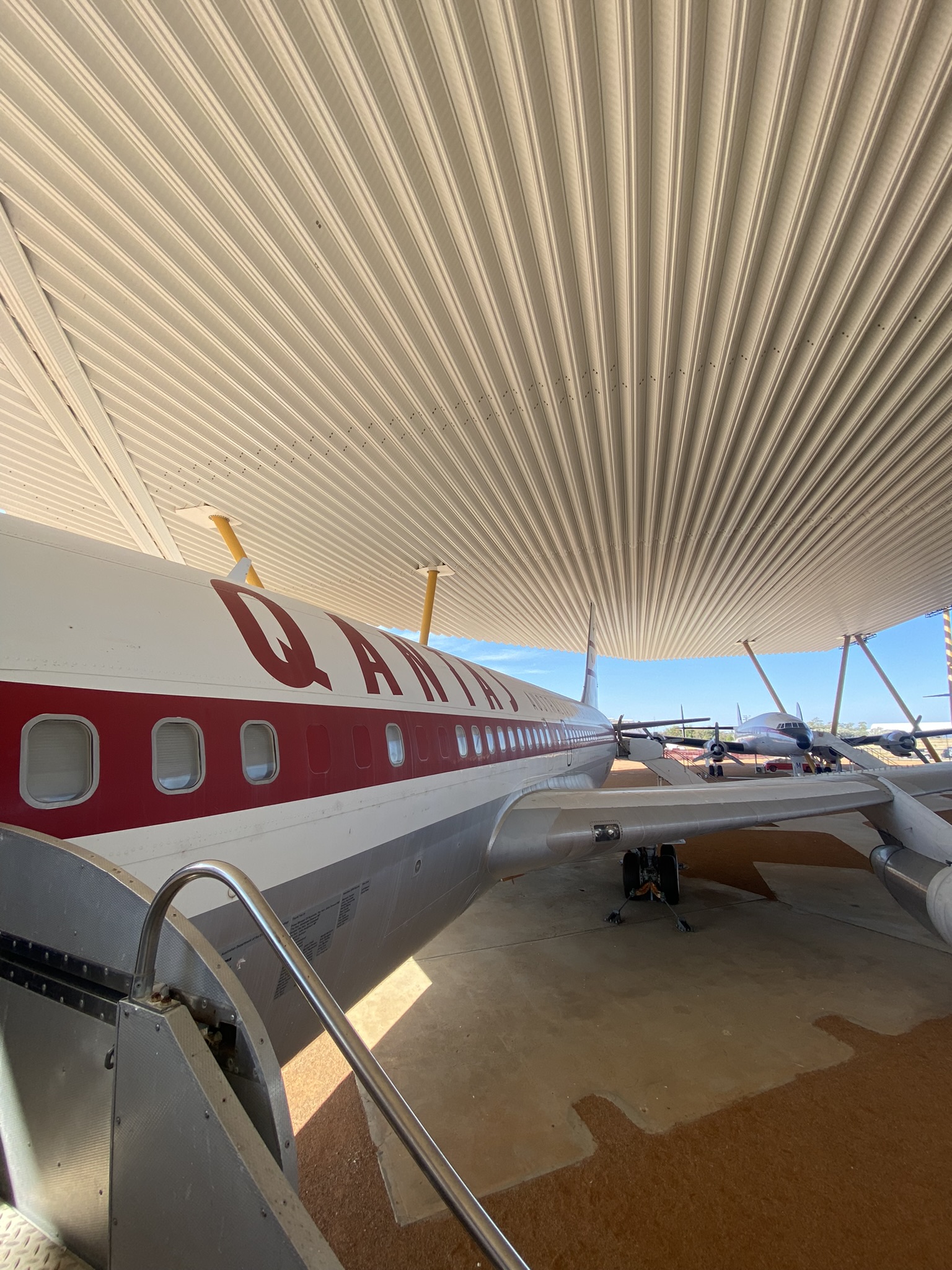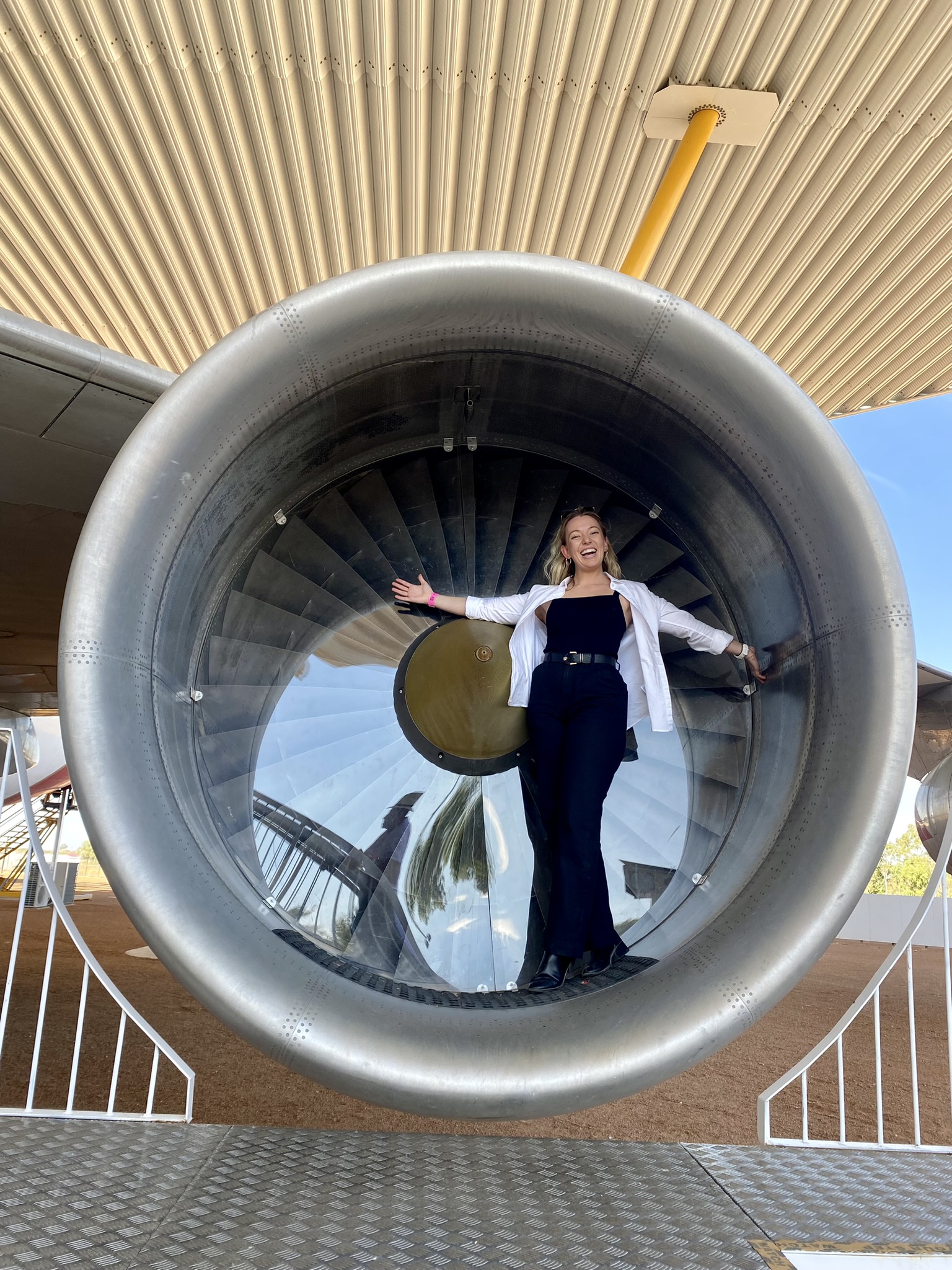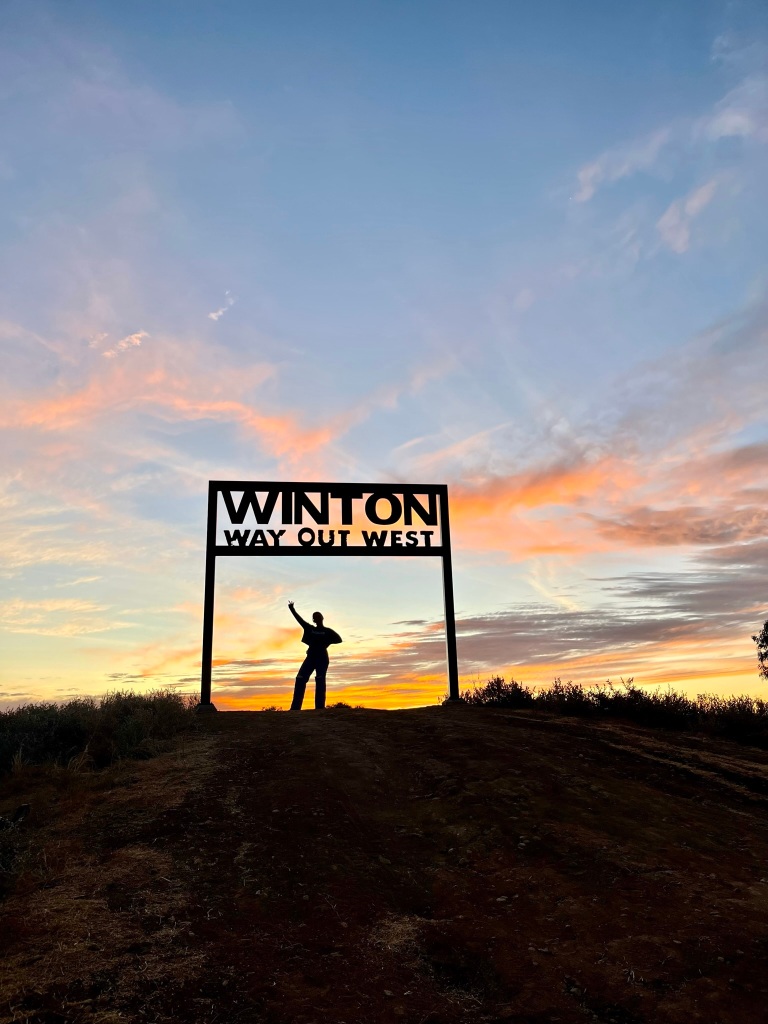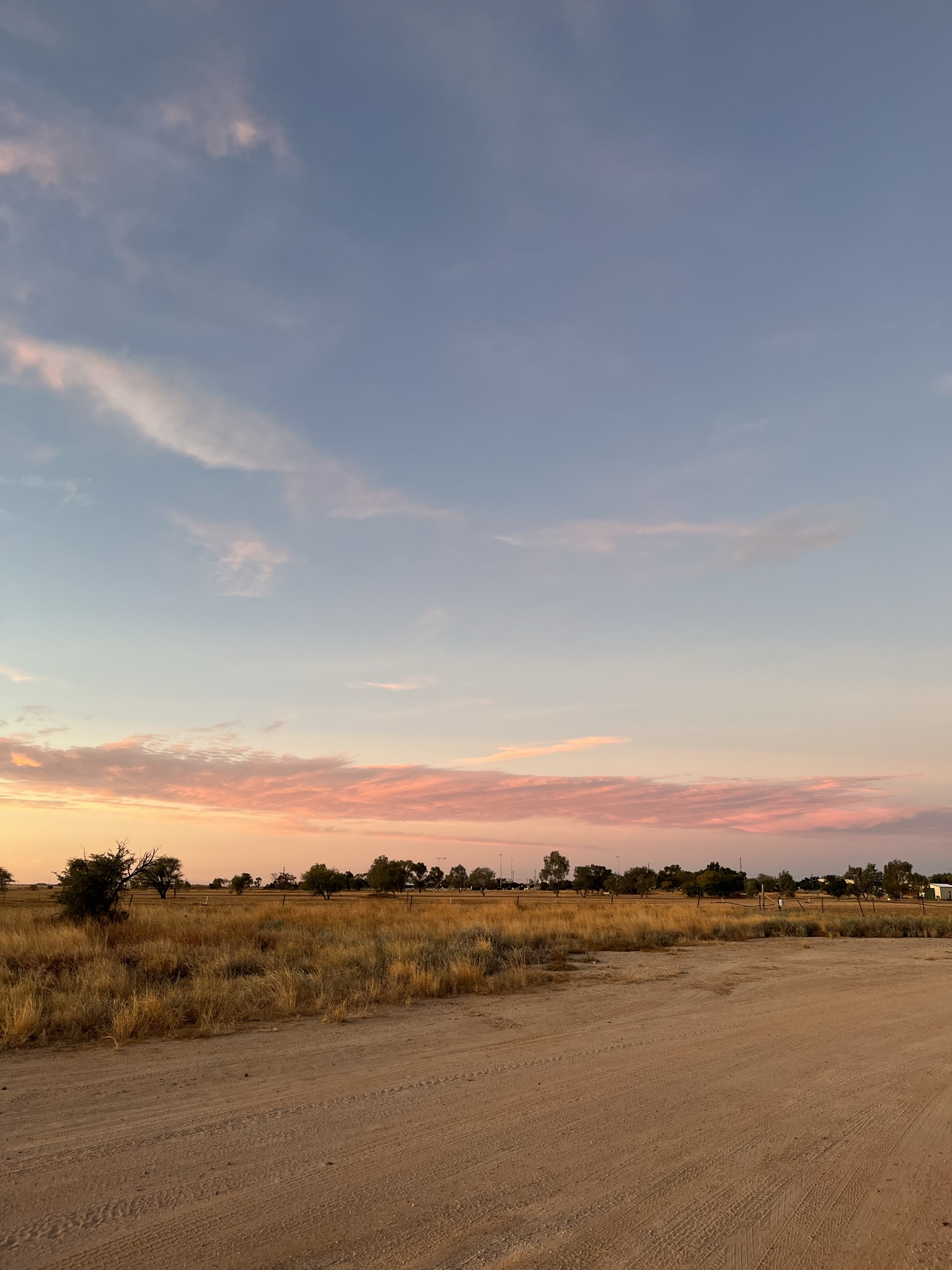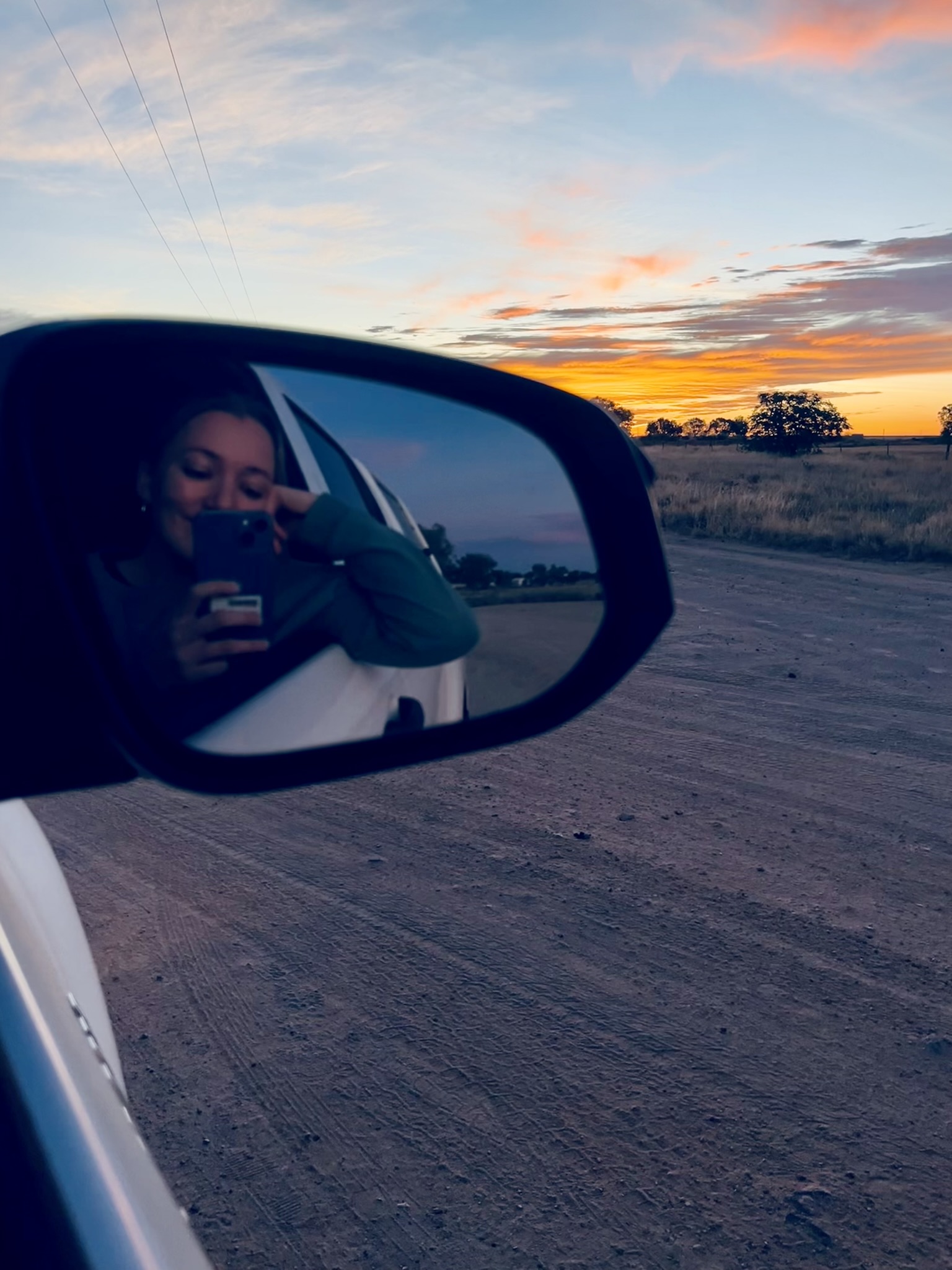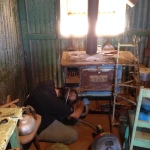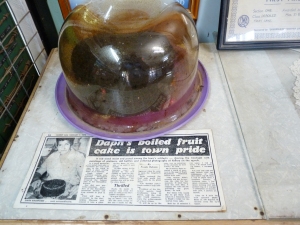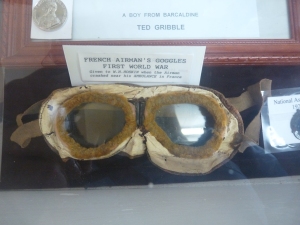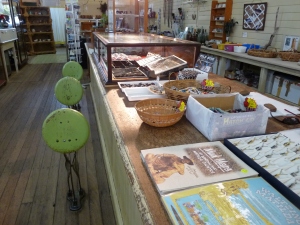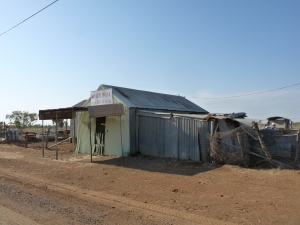Blog Archives
The tour continues…
Last week I shared some highlights from my journey out west, showcasing some hotspots from Winton. This time, we’re on Iningai Country, in Longreach.

Stockman’s Hall of Fame
I love an audio tour – so experiencing the redeveloped spaces at the Stockman’s Hall of Fame was a must for my trip to Longreach. Walking through the space with the audio guide, you get the chance to explore what it must have been like to traverse the outback as a stockman or stockwoman (or even the local postman!) or be one of the Traditional Owners who were facing the onslaught of people travelling on their Country. Through collaboration with Dr Tauri Simone, Koa woman, academic and stockworker, and Iningai Traditional Owner Suzanne Thompson, the Hall of Fame redevelopment saw the theme of connection to country become more intertwined in the displays, as well as the stories of Aboriginal women who became head stockwomen and could outwork the men becoming a more prominent part of the exhibition. The museum also featured stories about how communities spent their downtime in the outback, at pubs and films and dances; explored the poetry and artistry that has come out of the outback over the years and delved into the history of the Royal Flying Doctor Service.
Qantas Founders Museum
I never thought i’d get to sit in the pilots seat of a decommissioned Qantas Jet, but here we are.
Sarah Johnson, the fantastic Senior Curator at Qantas Founders Museum took me on an incredible walk around of the facility, and became my personal photographer for the day. One of the key attractions she showed me was a repurposed passenger plane that was transitioned into a private jet, fit out with a double bed and a cocktail lounge.
I left the museum with one unanswered question: who do I talk to about the return of the bright yellow, tropical Qantas flight attendant uniform?
Longreach Powerhouse & Historical Museum
A special mention goes to the Longreach Powerhouse & Historical Museum, where you can listen to ‘Singing in the Rain’ on an incredible old record player; walk through the old Powerhouse to witness the machinery still on show (and if you’re lucky see the local Kookaburra family living in the roof); and explore the historic Nogo Cottage, part of the original homestead of Nogo Station built in 1918 which depicts family living conditions in Western Queensland between the 1930s and 1950s. I tried to find out the exact peach colour used to paint the exterior walls of the Cottage, but alas, no luck… A shout out to Tanya and Kath who showed me a whole range of quirky objects in the galleries, one being the ceremonial spade used by Queen Elizabeth in 1970 to plant a tree at the Longreach Civic Theatre.
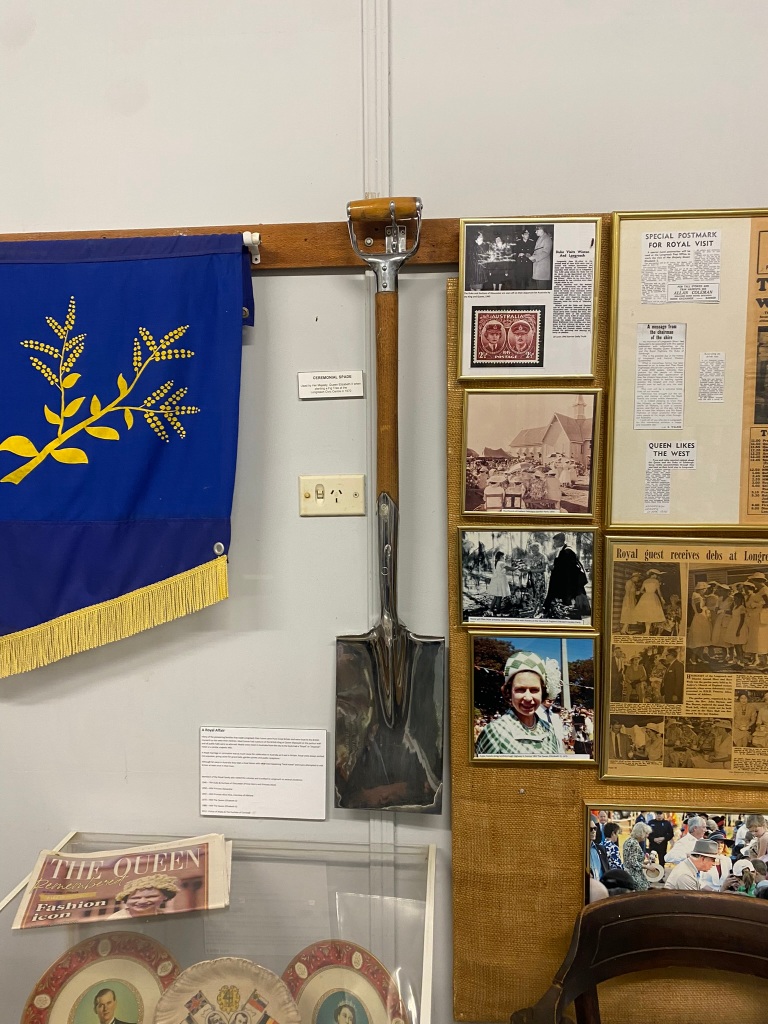
Without delving into any more detail about the incredible people I got to talk to every day and the pros and cons of daily pub feeds, some snapshots of the trip include:
– Covering a distance of around 1500km
– Coming face to face with more than my fair share of brolga’s
– Seeing 20+ dinosaurs
– Tasting the iconic ‘Winton’ and ‘Longreach’ lagers
– Hearing an atrocious amount of snoring through motel walls
– Putting together a good collection of failed attempts at self-timed photos (#solotravel)
– Marveling at spectacular sunsets
– And meeting some of the most vibrant players in the cultural industry, based all the way out west.
An enormous thanks goes to the communities, volunteers, and museum teams who welcomed me into their spaces and showed me what they are passionate about. One of the best parts of being an MDO is getting to connect with the communities who make what we do possible.
And if you’ve made it this far, here’s an insight into what really fills up my camera roll: those divine western skies!
Until next time!
Way Out West: The teams newest MDO heads into the outback
As Museum Development Officers, every so often we get to jump on the road and head out to connect with some of our community partners. It means we can get a feel for the spaces where communities are living, working, and thriving and get to know the people who are making things happen in the regions. As the newest MDO in the team, I was lucky enough to head out through the beautiful western outback and spend a week exploring Winton and Longreach and all the quirky places in between.
Follow me on a highlights reel through the west – first stop, Winton.

The drive from Townsville to Winton is underrated – you pass through more well-known places such as Charters Towers and Hughenden, but also the sweet little spots along the way such as Prairie, where you can hopefully snag some vegies from their roadside stand.
Keep driving into the horizon and you eventually arrive in Winton: the birthplace of the iconic Waltzing Matilda song. Winton is the gateway to Australia’s Dinosaur Trail, and when they say it’s famous for its friendliness and big smiles, I’ll agree ten times over. Being welcomed into a community like Winton is a really uplifting feeling: everyone you meet out there wants you to know you’re welcome and wants to show you exactly how special the area is.
The Heritage Truck and Machinery Museum
For any trucks or machinery buffs, this museum is a must do. Picture multiple large sheds housing all number of trucks and vehicles, each one with their own unique story. My favourite was the truck driven by Thora Daphne “Toots” Holzheimer: Australia’s first female truckie. For three decades, Toots clocked up more than 1.6 million kilometres hauling freight across remote Queensland, traversing the dusty dirt roads across Cape York and along the inland roads out to Mount Isa. Old Girl, her trusty steed, is housed at the museum in Winton where visitors can also purchase her biography, Toot’s: Woman in a man’s world, written by one of Toots’ daughters Donna Vawdrey to preserve her mother’s legacy. Toots’ is remembered by many as a ‘hero of the Cape’.
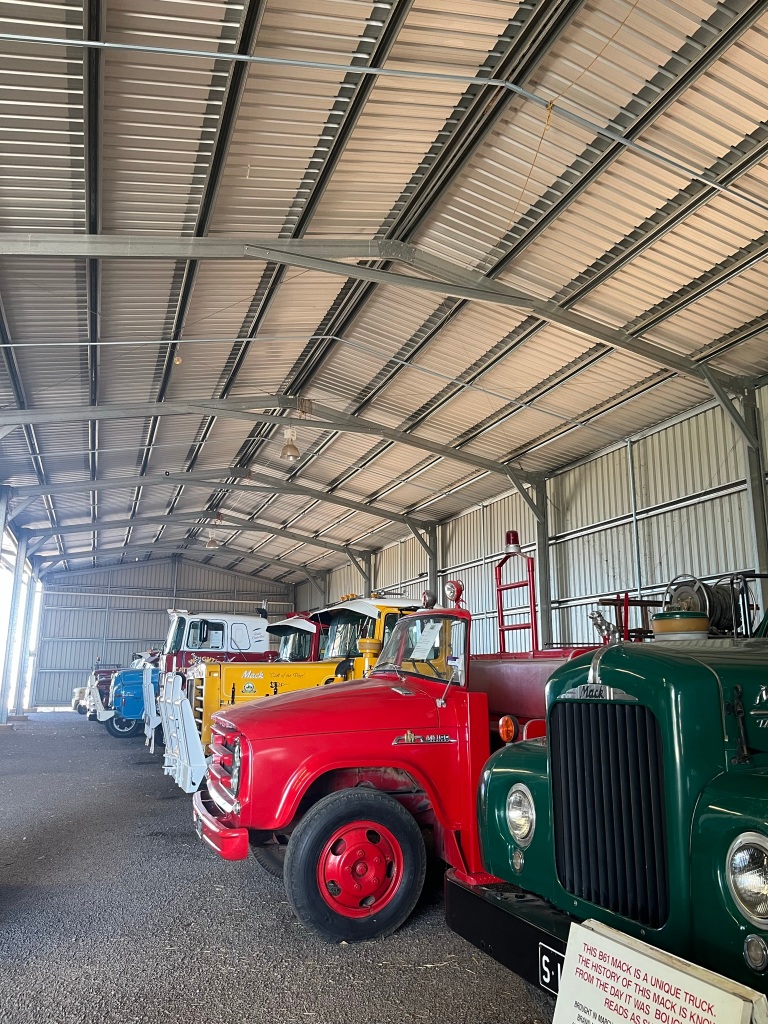
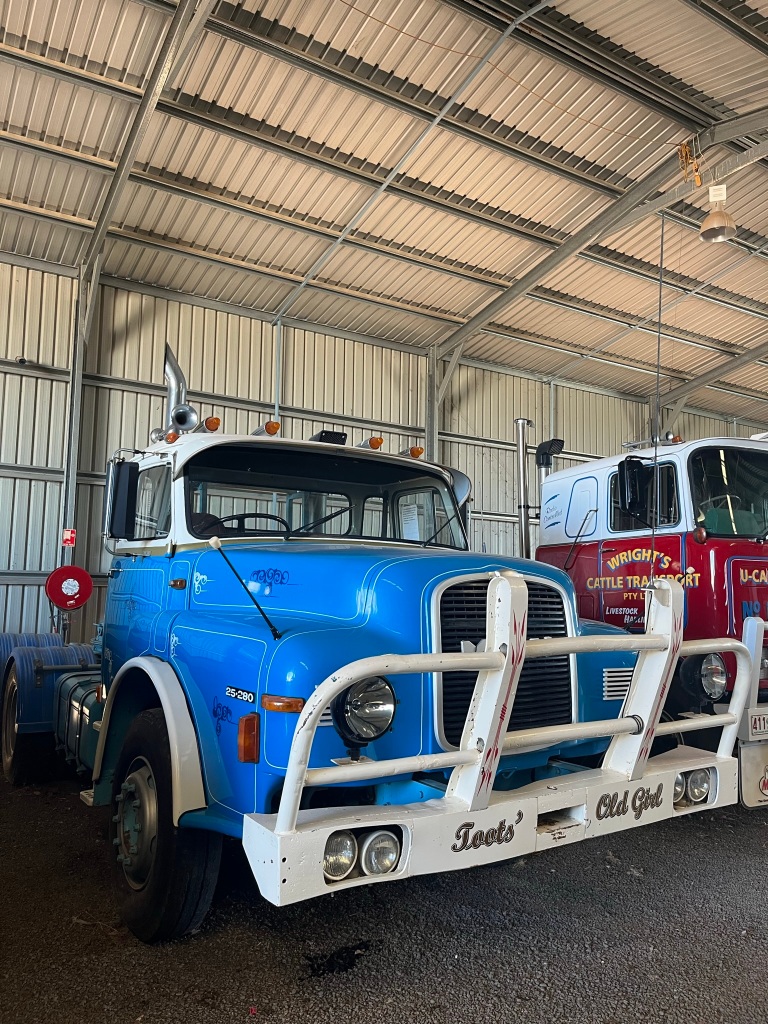
The Royal Open-Air Theatre
Set in the heart of Winton’s main street, the Royal Open-Air Theatre is a unique cinematic experience. When you enter the building, you get an immediate glimpse of the incredible open-air theatre space out the back. Winton has some of the clearest night skies and sitting underneath the starry skies on a canvas seat in front of a theatre screen is unforgettable. Built in 1918, Winton’s theatre is one of two open-air theatres still operating in Australia. I met with Geraldine Coughlan while I was there, the daughter of Vince Evert, who bought the theatre in 1964 after the death of his father and is known as the ‘Father of Tourism’ in Western Queensland. Geraldine and the team of volunteers and family members managing the theatre are so passionate about the preservation and interpretation of the space – and it shows. If you make it to Winton on a Tuesday or Wednesday you can even experience the Nostalgia Nights held at the theatre and relive the experience of going to the movies during the 1960s. Just remember to pack your woollies!
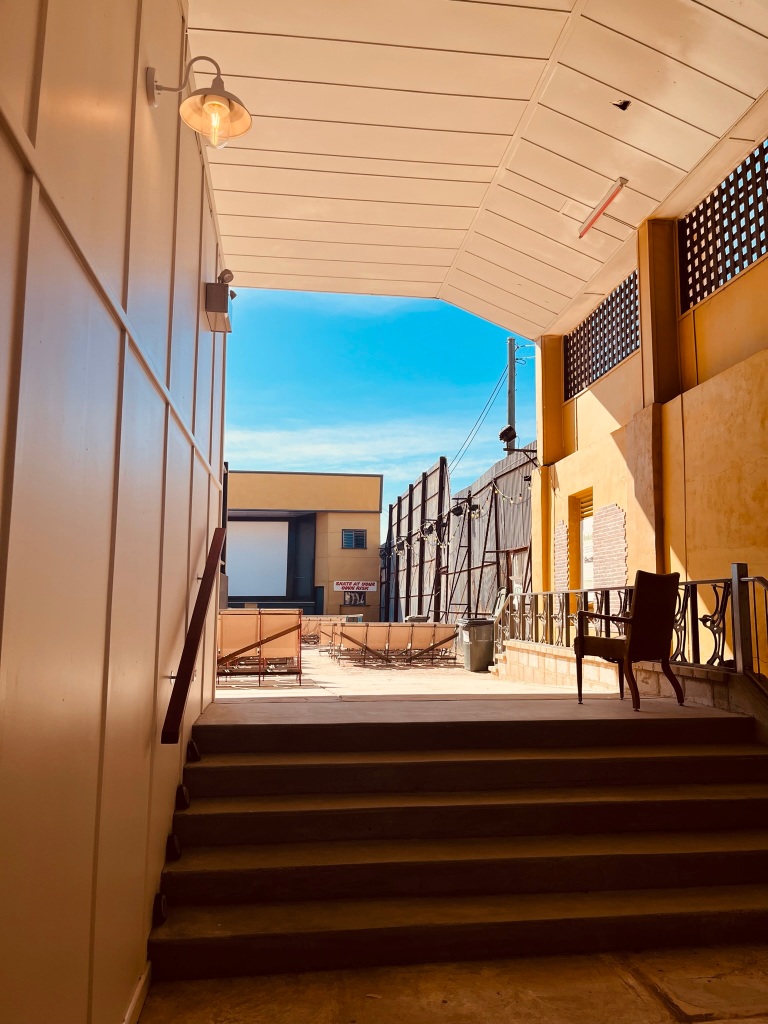


Waltzing Matilda Centre
Walking through the Waltzing Matilda Centre, you can just feel the enormous efforts of the volunteers at the Winton and District Historical Society and all they went through to make the centre what it is today. Following the devastating fire of 2015, where significant items and parts of the original centre were damaged beyond repair, the new Centre showcases a range of incredible stories, objects and interpretive displays in both the new areas of the museum and the buildings which survived the fire years before. You can read more about the work that Queensland Museum MDO’s did in collaboration with the Historical Society and Winton Shire Council following the fire event on our blog.
Members of the Society are still working hard on interpreting more and more of their collections in the different display spaces and are keenly looking into some possibilities for digital preservation of research, images, and historical data for use into the future. Bruce and Helen from the society took me on a wonderful tour, which could have gone for 3 more hours than it did, given the breadth of stories and objects both on display and in storage.


Of course, you can’t go to Winton without also stopping off to play some tunes at the Musical Fence (where the bass line for Gotye’s Eyes Wide Open track was recorded) or visiting Australian Age of Dinosaurs.


Onwards to Longreach…stay tuned.
Langenbaker House Conservation Clean
Before the serious heat of summer struck, MDO Josh Tarrant and I travelled to Ilfracombe to undertake a conservation clean of the objects and interior of Langenbaker House. I have previously blogged about the history of this remarkable piece of Western Queensland history – moved to Ilfracombe from Barcaldine in about 1899, it was occupied continuously by the Langenbaker family for over 90 years. On the death of the last family member, the house and all its contents were acquired by the local council in order to preserve this increasingly vanishing part of Queensland’s heritage.
Situated in dry, dusty, drought-stricken Ilfracombe, keeping the house and contents clean will always be a challenge. The design of the house – timber frame with corrugated iron walls – would have allowed plenty of breeze to flow through, keeping the Langenbakers cool, but has also let in dust and pests now the house is unoccupied and not receiving the regular housekeeping attention of Mrs Langenbaker. The dust had built up over some years, so it was time to arm ourselves with vacuum cleaners and set to work.
Not only does dirt and dust detract from the appearance of objects, it also creates food and habitation for pests, which may further damage collection items. As the aim of our conservation clean was to remove these harmful agents in order to safeguard the items for the future, normal household cleaners were off the agenda, as these are often just as harmful to objects as the dirt and pests themselves. Our primary cleaning tools were vacuums with adjustable suction and micro-attachments, soft brushes, with the occasional sparing use of distilled water and cotton buds. But even these simple tools produced dramatic results. Colours became more vibrant (or even visible!), and the house took on a more lived-in feel. Mrs Langenbaker had a reputation as a meticulous housekeeper, so the appearance of the house is now more in keeping with how it was maintained during her lifetime.
Annual deep cleans are an excellent way of extending your weekly or monthly collection cleaning schedule, getting in to those hard to reach places, and giving your collection a good health check. But be prepared to put in some time – our conservation clean of Langenbaker House took five full days! Click on the images below to see some of the results.
- Bernie Langenbaker’s dresser before and after cleaning.
- Bernie Langenbaker’s desk before and after cleaning.
- Surprise! This ashtray was actually a dark red.
- We really did clean everywhere – from top…
- …to bottom!
- Every drawer and cupboard was emptied, cleaned, and the contents replaced.
- A gentle vacuum clean produced noticeable results on this lace curtain.
- Family photos getting some care.
